Make Your Own Bacon at Home
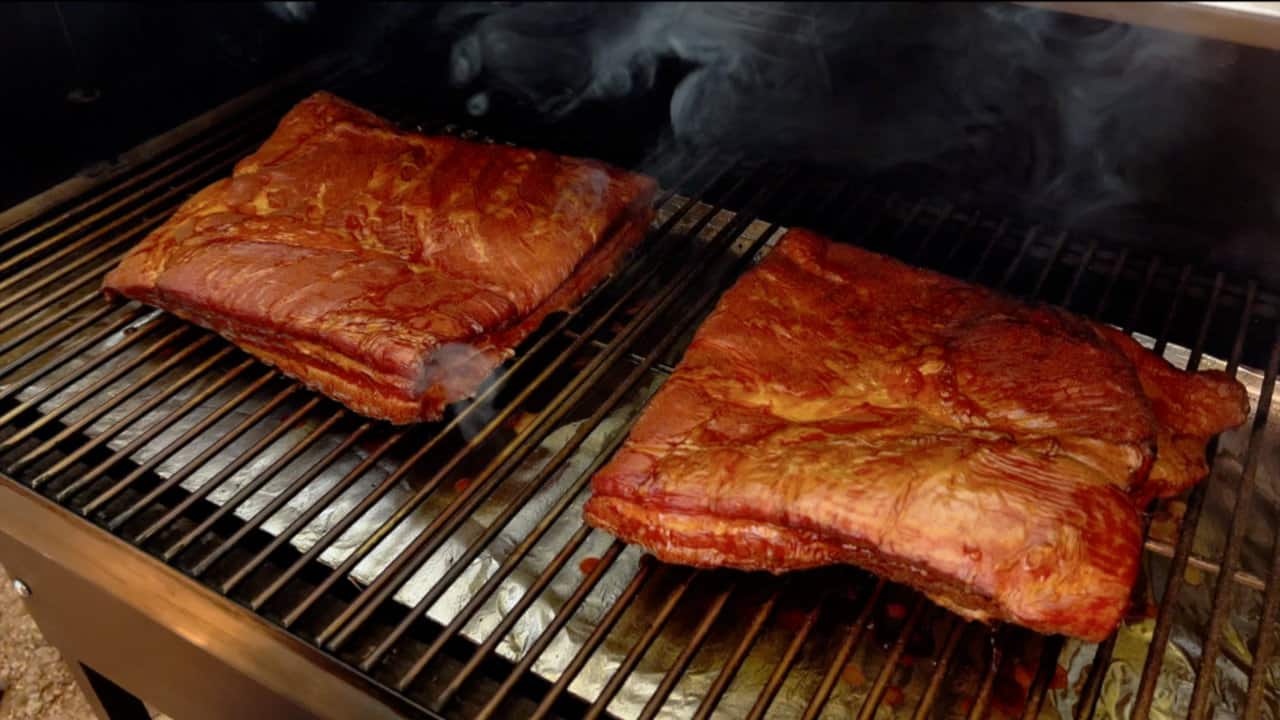
Smoking-Meat.com is supported by its readers. We may earn an affiliate commission at no extra cost to you if you buy through a link on this page.
Read this article without ads
Have you ever wanted to make your own bacon at home in the smoker or even in the oven (if you don't have a smoker)? Well, I have taken the time to write up instructions and there's even a companion video that goes along with this in case you'd rather watch it being done.
All you have to do is find a pork belly (Costco, Sam's, butcher shop, etc.) and order some curing salt #1 from Amazon and you'll be good to go. I'll show you exactly what you need to do and when you're done you'll say, “Man that was easy!”
Let's get started!
- Prep Time: 30 minutes
- Cure Time: 10 days
- Cook Time: 6-8 hours
- Smoker Temp: 180°F (82°C)
- Meat Finish Temp: 145°F (63°C)
- Recommended Wood: Hickory, pecan, or maple
- 1 whole or half pork belly, rind removed
- 1 gallon of cold water
- 1 ounce curing salt #1
- ½ cup coarse kosher salt
- ½ cup white granulated sugar
- ½ cup dark brown sugar
Disclaimer: Curing salt can be dangerous if used in very high amounts. The amounts used in this recipe are WAY below what is unsafe and you can rest assured that if you follow this recipe, you are WELL within limits and don't have to be worried about it.
I studied this for years before I attempted to tell anyone else how to do it and, even so, I only recommend wet curing, semi-hot smoking and cooking the meat to safe eating temperatures since that is the safest method. I leave the dry curing and cold smoking of bacon to the professionals.
The 1 ounce (heaping TBS) that I use and recommend for 1 gallon of water in this recipe is bare minimum usage and only for reproduction of flavor that we have come to expect in our bacon. It is extremely safe in these amounts.
Having said that, you should always be cautious when using curing salts to make sure that you measure correctly and follow safe curing and cooking methods.
This tutorial is not a declaration that I know all things about curing bacon. I am a student of curing bacon and simply share what I have carefully researched and learned over the years. Everything you do is at your own risk and if you do not feel that you are able to follow these instructions carefully, then do not proceed. Buy your bacon from the store already made and be happy.
Moving on now..
You can purchase this from Amazon or you may be able to find it locally at butcher shops, etc.
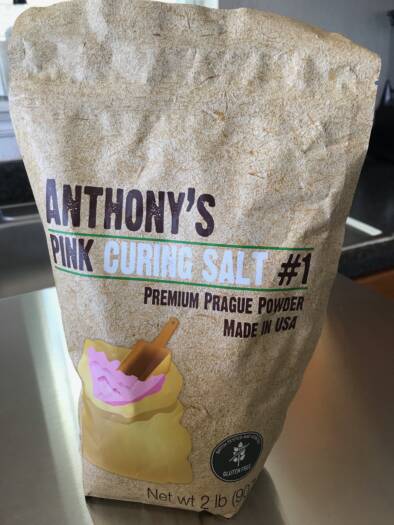
Some other names for curing salt #1 are instacure #1, Prague powder #1, and pink curing salt #1.
For this recipe, we'll add 1 ounce of pink curing salt #1 to a gallon of water. An easy way to measure an ounce of this is to use a heaping TBS (learned this from a guy who made cured meats for sale his entire life and his father did the same).
Here's my 1 ounce of curing salt #1 (heaping TBS):
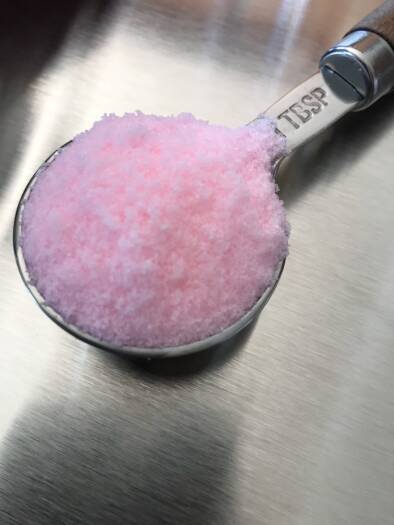
Place 1 gallon of cold water into a large stock pot or other large container.
Into that water add 1 ounce (equivalent to 1 heaping TBS) curing salt #1, ½ cup white sugar, ½ cup dark brown sugar, and ½ cup coarse kosher salt.
Use a wooden spoon to stir this mixture for about 1 to 2 minutes or until everything is dissolved into the water.
Set the brine aside.
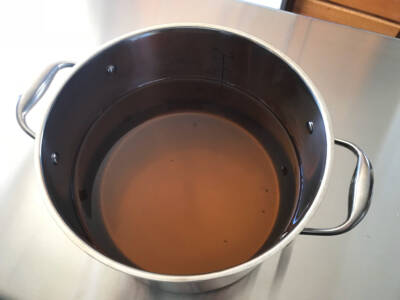
To make the pork belly more manageable and to make it fit better into household sized containers, I recommend cutting in half or thirds right off the bat.
I usually cut mine in half.
You can also leave it whole if you prefer but you'll need a fairly large container so it will fit.
I have not seen a store sell pork belly halves but if you find one, then you can skip this step.
Place the pork belly into your brining container then pour the curing brine over the meat to cover.
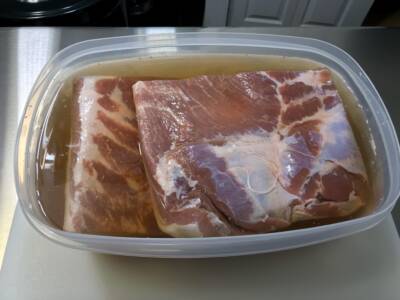
If for some reason, the brine does not cover the pork belly, simply make up another batch. The size of your container and it's relative size to the pork belly will determine how much curing brine you will need.
I use a deep 6 quart rubbermaid container from the “w” mart with a red lid and a clear bottom. A whole pork belly cut in half fits perfectly into it with 1 gallon of curing brine if you want to just go purchase something that works.
If the pork belly is floating above the surface of the water, place a zip top bag full of ice on top of the meat to help hold it down. You can also use a small bowl, saucer, etc. to weigh it down.
It's important that the pork belly be submerged during the curing process.
With the lid on the container, place it into the fridge for 10 days.
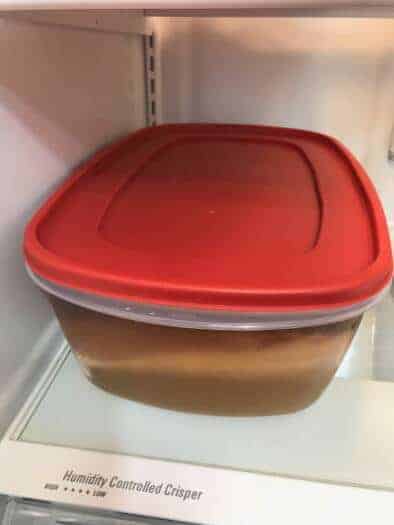
During this time you will need to open the bowl every day and flip the pieces of meat over, move them around, turn them around, etc.
This is to ensure that all sides and areas of the meat get cured evenly.
On day 11, the wait is over and it's time to proceed but not so fast, oh impatient one!
We have to make sure the salt is perfect for YOU before we get too far along. The ½ cup of coarse kosher salt gets you in the correct range and I think it'll be perfect for most of you but it's still a good practice to make absolutely sure.
Remove the pork belly from the curing brine and cut off a small sliver of meat from one of the edges.
Fry that piece up in a pan just like you would any other piece of bacon.. nice and brown and crisp!
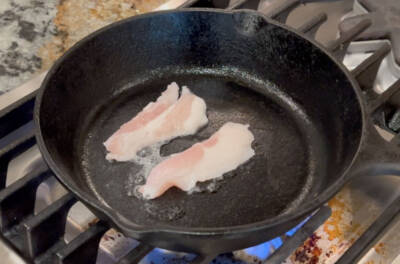
Taste it and see what you think about the salt level.
Bacon is supposed to have a nice salty flavor but it should not be overly salty.
If it's too salty:
Dump out the curing brine, rinse the container. Place the pork belly back into the container and cover with cold, fresh water.
Place the container back into the fridge for 4-6 hours where some of the salt will leech out of the pork belly into the fresh water.
Do another fry test.
If it's still too salty, repeat the soak with fresh water and another fry test.
Do this until it's perfect for you and your family.
If it's perfect:
proceed to the next step.
The pork belly takes on a lot of water during the curing process and we want to let the outside of the pork belly get nice and dry so it will smoke better and end up a better product.
Pat the outside of the meat dry with paper towels and place the meat on a pan with a rack.
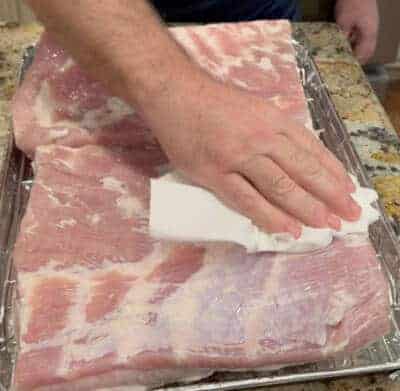
Place it back into the fridge for 24 hours.
I've heard of people only doing this for 4-6 hours and it seems to work okay but I think 24 hours is much better and you've waited so long for this, go ahead and finish it up right!
The time has come to finally smoke this stuff up and make it into a glorious slab of bacon!
Fire up the smoker and set it up for indirect heat at about 180°F (82°C) if possible with plenty of smoke. I like hickory, pecan, and maple the most and/or a mix of these. In a pellet smoker, I've also had great luck with these and various competition blends.
Pellet smokers work really well for this if you have one that puts out good smoke. Some pellet smokers are just grills, they don't do much smoking even at low temperatures but I digress!
When the heat is right and you have good smoke, place the pork belly right on the grate and close the lid.
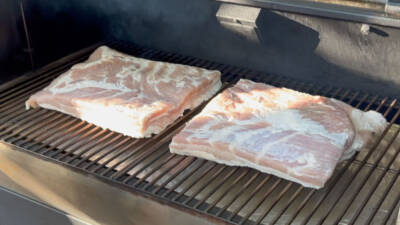
At this temperature, you can expect it to take between 6-8 hours. The last 2 pork bellies I have done took right at 7 hours but thickness, actual smoker temperature, and even weather will play a huge part in how long it actually takes.
We are looking for that pork belly to reach 145°F (63°C) in the thickest part.
Let the magic happen!
When the pork belly reaches 145°F (63°C) in the thickest part it is ready to slice but I do recommend giving it a couple of hours in the freezer to firm it up. This will make it slice a LOT easier.
I put my halves into jumbo zip top bags and into the freezer for about 2 hours.
I then pull out one half at a time and slice it up before getting the other one out for slicing.
Rule #1: Slice across the grain to make the bacon more tender.
I used an inexpensive slicer from Amazon that I've had for several years.. a Chefs Choice 609, since I don't make bacon too often.
Update 10/16/23: I just got a new Bestwood slicer that's a lot nicer and more expensive, but I haven't made bacon with it yet. I will show some pictures of that once it happens.
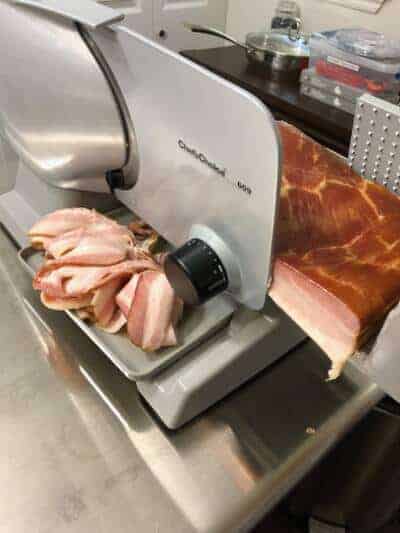
You can also just slice it by hand and this is where placing it in the freezer before slicing really comes in handy.. makes it a LOT easier.
Make sure your knife is razor sharp and then tell yourself that craft bacon isn't supposed to be perfect like that store-bought stuff. It's supposed to look like it was cut by hand.
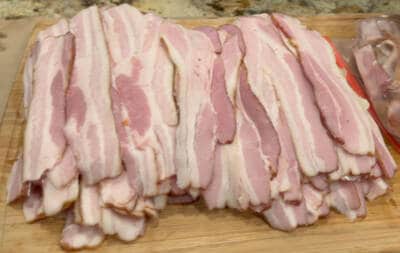
I usually vacuum pack the slices and give away about half of what I make to my kids, friends, family, etc. and then the other half goes in the freezer. Bacon thaws quick so just throw a pack in the fridge the day before you need it and it'll be ready for you.
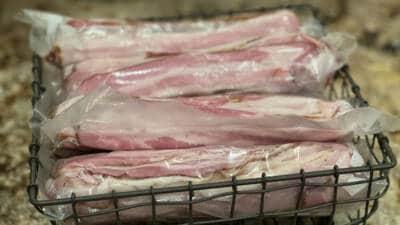
Wet cured bacon will last in the fridge for about a week but I err on the side of safety and anything I'm not giving away, goes in the freezer. I also recommend freezing to the people I give it to if they don't plan to use it within a few days.
If you have specific questions about making homemade bacon in this way, please ask in the comments below and I'll do my best to get you an answer. If I don't know, I'll find out.
There are also a ton of people over at our forum at smokingmeatforums.com that know WAY more about curing and making bacon than I do and that would be a great place to ask as well.
Wanna see me make this live? Here's the video!


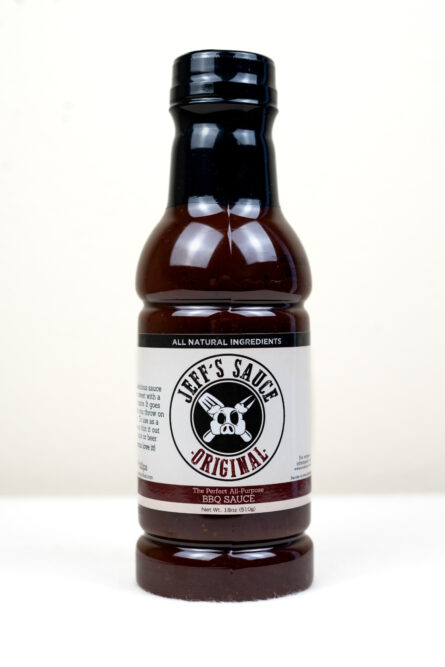
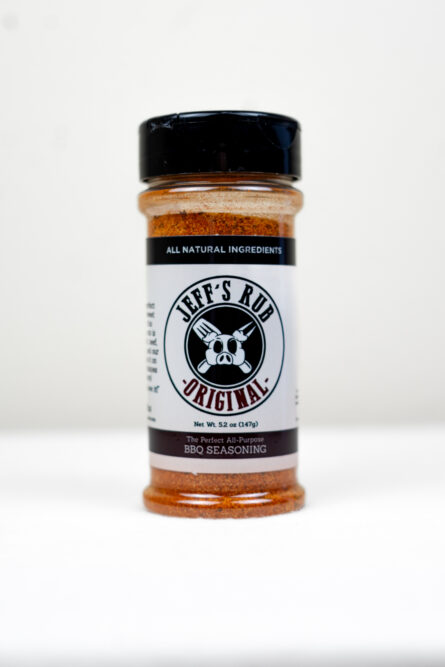
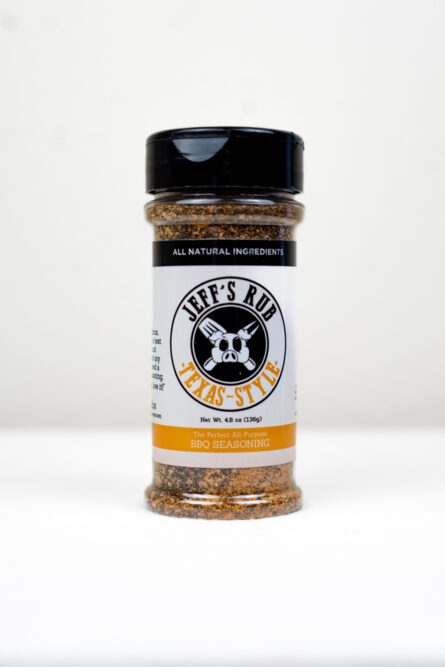
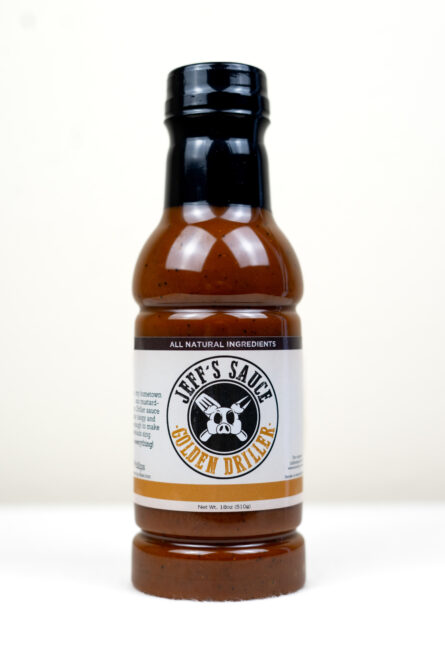
I have made this bacon twice now and it is fantastic! I have not had to rinse to reduce saltiness either time. On this most recent batch, I cut the sugar in half and we really like it this way better. The flavor from the meat really stands out and it does not get sticky when cooked like the first batch did.
Can the brine time be longer than 10 days?
Jeff,
I’ve read this twice, great information. I had an old recipe from DaveOmak and BearCarner but I’m looking for some other recipes. I do NOT see a weight/pounds for this recipe based on the ingredients. I know they vary from 4-5 lbs if purchased outside of a butcher. I’ve done both and I can get the local butcher to get VERY close to 5 lb slabs!!!!
Thank you,
Tony
I have used your recipe 3 times now and it rocks. I haven’t done the bacon test since the first time-no need to!
I use an off set smoker and use either cherry or apple. Delicious!
Question have you ever added anything to the brine like diced jalapeños?
THIS IS MORE LIKE A QUESTION. I purchase pork belly but I never notice they had cut them in appr. 1.5 x1.5 inch chunk. Can I use the same process mentioned above in the 11 days brine or should I do it differently. This is the first time trying to make homemade bacon.
Can you use a vacuum sealer to do the wet brine?
Yes, you can use you vacuum sealer to seal in the meat and brine and as long as the brine is still completely surrounding the meat, it will brine that way just as it would in a lidded container. I would still flip the sealed package over a few times during the wait.
Is mesquite-smoked bacon too “smoky?”
This is a matter of personal preference.. I like a lot of smoke flavor, so it’s perfect for me, but if you tend to not like things very smoky, you might opt for pecan, hickory, oak or even a fruit wood instead.
I have made bacon from this recipe about 10 times now and the enitre family loves it. Better than our local packer! Excellent recipe and excellent site to follow.
Steve Kelly
Belwood Lake
Ontario, Canada
Can I use this brine for buckboard bacon too
Yes
Jeff do you aver add any spices to brine or before you put on smoker?
Picked up pork belly yesterday and I going to start the brining process today.
I have made this bacon now about 10 times it is fantastic, I can do about 20 lbs at a time and slice and wrap in butcher paper and freeze! The family loves it. Never been to salty and am going to experiment a little with my next bacthes with a little heat.
Thank you
Hi Jeff, I’ve been following your advice fur several years now. I bought a 5.5 lb chunk of pork belly at Sam’s Club. I made the brine as prescribed and went to place in a container (I thought it was the same size as yours, but turns out it wasn’t as big). I then cut it into smaller chunks and placed into two different containers. I used all the brine between the two containers (both were full). I know the mixture should be uniform throughout the liquid, but I just wanted to make sure this was ok to do. Thank you.
Do you have to leave in brine for 10 days? What would be the shortest leave in the brine.
I like to go a full 10 days but seven days is probably about the shortest I would go for just a basic soak.
You can speed things up by injecting some of the brine into the meat. Inject the pork belly really good then brine it for 3-5 days. Then, cut the pork belly in half and make sure the brine has made its way all the way through the meat before deciding to call it finished. You’ll be able to tell based on the consistent color of the pork belly. If it needs a little more time, give it another day or two.
Can I put maple syrup in with the brine ?
Yes, you certainly can.
hello I am from Quebec, can you tell me what is the difference between your recipe and that of MAITRE FUMEUR
Andre, his recipe is dry cured with no water and requires calculating the curing salt as well as the other ingredients based on the weight of the bacon. My recipe is water cured and uses the same brine/cure recipe regardless of the size of the pork belly.
As long as the pork belly is submerged in the liquid for ~10 days, it will be perfect.
Some say the dry curing method produces a better flavor but in my opinion, water curing is much better for people just starting out and learning how to cure bacon. As you advance into bacon curing, you can learn how to properly calculate the ingredients so the bacon will be safe to eat.
I have been making water cured bacon for a long time and it produces bacon that is a LOT better than what you can purchase in the store.
If it is too salty after you smoke it, can you leach it out or throw it away?
Jim, it is best to test the salt after the brine but before the smoking session however, you can try soaking the cooked bacon in water for several hours in the fridge and see if that helps. I have to believe there is hope rather than just throwing it away.
If nothing else, you can cut it up into chunks and use it to season soups, stews, beans, etc. where the saltiness would be a good thing, sort of like ham.
How much of the sugar in the brine is absorbed by the meat? Reason being I am trying to cut out sugars in my diet. Will it still work if I leave out the sugars and do just the salts in the brine?
I’m not sure how much of the sugar actually gets into the bacon but it certainly doesn’t come out sweet. I’d say very little but maybe someone that knows the science can enlighten us.
You could definitely make the bacon without the sugar if you wanted to.
Have finished a 10 day cure and just placed a pork belly in my smoker when the thought occurred to me. Is there a technique to get from cured unsmoked pork belly to pig candy, aka millionaires bacon? Or is two smoking sessions a better technique?
Happy New Year🎉🎉🎉
I have not tried doing this as a single process but would welcome any and all feedback on this. Sounds interesting!
First time for me curing anything. If I am only doing a half belly do I need to halve the wet cure ingredients? Thanks, Jeff!
Vaughn, when using a wet cure, you do not need to change the ingredients based on the amount or weight of the meat since it works in the principle of equilibrium. The salts in the cure seek to equalize inside/outside the meat so the ratio of salt to water is what’s important, not the amount of meat that’s in the cure. It is important that the curing brine covers the meat so you may make more or less for that reason.
As you probably know, this is not the case when doing a dry cure. In dry curing, the curing salts are figured based on the weight of the meat and requires precise calculating to make sure you get it right.
Instead of cutting the pork belly in half, I found a bunch of pork belly already cut into 3-5″ wide strips at my grocery store. Will curing these smaller sections have any effect on the final product? Is there a better recipe for using smaller pieces of pork belly?
Mike, Using pork belly that has been cut into smaller pieces should not affect the curing time since the main variable is the thickness and how long it takes the cure to work its way through that thickness at its thinnest part. Theoretically, since the thickness is not changing, only the width of the slices, the cure time and method should not change.
Smaller pieces are definitely easier to work with.
I have always used hi mountain dry cures like buckboard bacon or regular bacon cures. 7 days in fridge, flip everyday, day 7 rinse and soak and like yours if to salty soak again, except I always smoke/cook @ 200° to 165° internal, safe eating at that point but of course ya gotta fry it. Never had an issue and everyone loves it. Just have to weigh the meat to know how much cure. Pretty simple and less fridge space. I will however try this process for I do a have a spare fridge. Thanks for all the recipes and knowledge you share it is very helpful!
Hi Jeff, greetings from Melbourne, Australia. We’re having our first try at smoking bacon, but am having difficulty controlling the heat in our home-made wood fired smoker. What difference will it make if we smoke at a higher temperature than you recommend? We can probably control at around 100 celcius (212F). Thanks in anticipation.
The slightly higher heat won’t ruin the bacon however, it just gets less time in the smoke which may decrease the smoke flavor.
Regardess, its perfectly done at 145°F (63°C) internal temperature and should be removed from the smoker at that point.
Jeff…I do have a question about the smoking home-made bacon. I have a Masterbuilt electric smoker and, when smoking most meats I impart smoke for no more than one-half of the overall cook time.
Do you use a good volume of smoke for the entire cook time w/bacon?
Early on in my smoking days I once ruined a brisket by using heavy smoke throughout the cooking time as it came out tasting like burnt charcoal…!!!
Also…do you any liquid in the smoker during the cooking/smoking phase?
Thank you in advance for your input.
I like a pretty heavy smoke on bacon but I’d say if you normally do about 50% of the smoker time with smoke then that will work just fine with the bacon and should give you plenty of smoke and color without overdoing it.
You can definitely benefit from using some water in that electric smoker for humidity.
Does a belly fromCostco have the rind removed?
Typically, yes.
These are amazing instructions! Thank you for the details!
I recently smoked my first batch of bacon but definitely not my last! It turned out fantastic, thank you for these instructions. I have a Woodwind pellet grill and used a high smoke setting, I also added a smoke tube to really pour the smoke to it and it worked great. Several lbs of wonderful hickory smoked bacon.
Next time I will try adding some cracked pepper to get some peppered bacon.
Have you tried a maple brown sugar cure? If so can you give the recipe. I’ve tried one that I found elsewhere and ruined a whole porkbelly.
I have played around with adding different things to the brine such as brown sugar, maple syrup, etc. but I haven’t gotten real scientific about it so far. If you do want to do that, I think a good starting place would be about a cup of brown sugar and a cup of maple syrup added to the brine to start and see how that goes.
If you want to go big, you can cut the pork belly into 4 pieces and try a different amount or ratio of the brown sugar/maple on each one and see which one you like the best. Once you get a recipe that is close to what you like, you can adjust that one further to dial it in.
Where can I buy a pork belly for this recipe?
Amber, I find mine at Costco. I heard that Sam’s also has them. If you’re not near one of these, go to a local butcher shop and ask them about it. They likely have them or can get them for you.
As always great instructions and photo’s. I am eager to try this wet brine method. My question is, if using Tender Quick what would the amount be?
I have the same question as Dale; I have fond memories of crispy bacon with the rind on. Can the bacon be smoked with the rind on?
Another question that I must ask, how necessary is the salt? I, as many Americans, suffer from high blood pressure and salt is verboten in my diet. Do you have an opinion of salt free bacon??
Thx for all your work and sharing!
You could definitely leave the rind on but at some point during the cook, you’d need to crisp the rind in some really high heat.
I definitely need to create some written instructions for this and I will do that soon.
Basically cook the pork belly at normal smoking temperatures until it reaches an internal temperature between 200°F (93°C) – 205°F (96°C) as that is required for it to be super tender on the inside.
Then you’ll need a grill, oven or hot fire to crisp the rind/fat side.
I usually score the rind at about ½ inch intervals as this helps it to crisp up better. Then give it 500°F (260°C) heat for 10-15 minutes or as long as it takes to crisp up perfectly.
Jeff, thank you for the great recipe. Question for you, I have a Char Griller 980 Gravity smoker. I’ve had my 11 lbs of pork belly, cut in half, on the smoker for about 2.5 hours and I’m already reading 140 deg. F with smoker probe, I then spot checked both pieces with a digital meat probe and was getting similar readings. I don’t think I’m going to get anywhere near 6-8 hours. Smoker is running right around 190 deg. F to 200 deg. F, I have the smoker probe, and independent digital probe, and I installed a gage in the lid. Am I doing something wrong? Thank you.
Micheal, every piece of meat is different and the fat to meat ratio also makes a difference not to mention that every smoker is also different in how it moves heat and smoke. Lots of variables and while we try to plan well, it’s not a perfect science.
As long as you trust your thermometer, it’s done when it says it’s done whether that’s earlier than planned or later.
Jeff,
Thank you for the response. Sliced it and froze it yesterday. Will use the first this weekend for family breakfast. Will post then whether it’s a hit or not. The thin ends that cooked through were really good so I’m hopeful the balance will be just as good when served with some over-easy eggs!
Mike
I will look forward to hearing about it!
Hi , I’m getting ready to try this and personally I like the really smoky bacon , what would be the process for a double smoked as a lot of markets call it ? Love your site !
Can you do this process with skin on? I remember as a kid years ago we had bacon with the rind on still, plus it’s a pain taking skin off. Thought please
Hi Jeff,
I need your help. We, this year, purchased our first pasteurized hog from a local farm. Since my illiteracy of doing a pork butcher order, I have made several mistakes that I”m hoping you can help with.
First, I made the mistake of ordering the pork belly, “sliced” but not seasoned. They used a liquid smoke we are not a fan of. So now, can you help me to guide me in how to smoke my, already sliced bacon, on my smoker? It is in 16 oz packages.
Secondly, I also made the mistake of ordering the hams sliced. The description from the butcher referred to them as “spiral” and I had in my mind a “spiral ham”, not the case. It is individually sliced and sealed ham steaks. I ended up with no hams. I’m bummed, but determined to use what we have.
So, now I have this healthy pasture-raised pork with no seasonings at all. Can you make suggestions?
Thanks!!
Dianne,
Oh my.. what a quandary! It sounds like the farm could have been more forthcoming on what to order, your options, what the options looked like, etc. I guess that’s a lot to ask but seems reasonable to me.
I am going to direct you to post this issue over at the forum so you can have the benefit of multiple members giving you ideas instead of just what I can come up with alone.
The forum is located at https://www.smokingmeatforums.com and it is free to register and use. Post your question just like you did here and let’s see if we can get some help on this.
Been doing bacon for a few years now. For flavor I use maple syrup and if you have distilleries in your area see if they maple syrup aged in a bourbon barrel. People go crazy when I make a batch of maple bourbon bacon.
First attempt at bacon. Did the brining, cure per spec. Bought a bag of of Vitakraft corn cob rabbit bedding pellets for my smoke source. The pellets are advertised as corn cob sourced only, nothing else is in the processing. Smoked at 225 until the meat temp reached 150. Aroma is amazing. I purchase cob-smoked bacon from Harrington’s yearly along with their other products. My bacon smells like Harrington’s. I’m frying up a piece tomorrow.
Jeff,
Good evening sir, odd question, do you put any rub or seasoning on the belly before smoking? Or is all of the flavor already set in by the curing process?
Thanks in advance,
Bria
In this recipe, I wanted to keep it simple but you could certainly add rub, seasoning, coarse black pepper, etc to the outside before smoking it if you wanted to. I would keep everything very low on salt or no salt for best results.
I like to know everything
I’ve been making my own bacon for years and cannot imagine going back to store-bought bacon. My curing process is almost the same however, I add coarse ground black pepper to both the brine and also add it to the fattier side of the bacon when smoking. (I like peppery bacon) My primary diversion from your recipe is that I use honey powder versus granulated sugar and Agave nectar instead of brown sugar. Done in an effort to keep my blood sugar levels down a bit.
Excellent feedback! I am seeking alternatives to the sugars as well. However , I am seeking a Sweet/Hot Combo, possibly a Maple/Jalapeño or Maple/Hatch Chile combo? Anyone having ideas on where to locate Maple Powder or Hatch Powder please advise. Otherwise please advise where to locate the honey powder. Thanks in advance! AND ONCE AGAIN, Jeff. You’ve done an excellent job detailing your processes
What about putting the meat in a gallon Ziploc bag and squeezing all the air out for the bringing time?
You can definitely do that although you might want to set the bag down in a larger container in case of leakage.
Which pellets smokes do you consider one that puts out good smoke. I have a Green Mountain Daniel Boone and I usually use a smoke tube to add extra smoke but I am still not sure if it puts out what is considered good smoke compared to other types of smokers like my Kamado Joe. What are your thoughts?
*Smoker, not smokes.
Chris, I have not used the GMG brand but have several friends who really speak highly of them. Of all the pellet smokers that I have used, the REC TEQ beats ALL of them in smoke production. Next in line is the Camp Chef Woodwind wifi version.
The key thing to using pellet smokers is keep the heat really low for the best smoke production. Any time you have to cook above 225, you’re not going to get heavy smoke in any pellet smoker.
Using a smoke tube is the best thing to do if you want to cook above 225°F and I think pellet smoker manufacturers should take note of this and figure out how to increase smoke production instead of just telling everyone that they don’t need more smoke.
There’s a reason the smoke tubes are used by so many pellet smoker users.